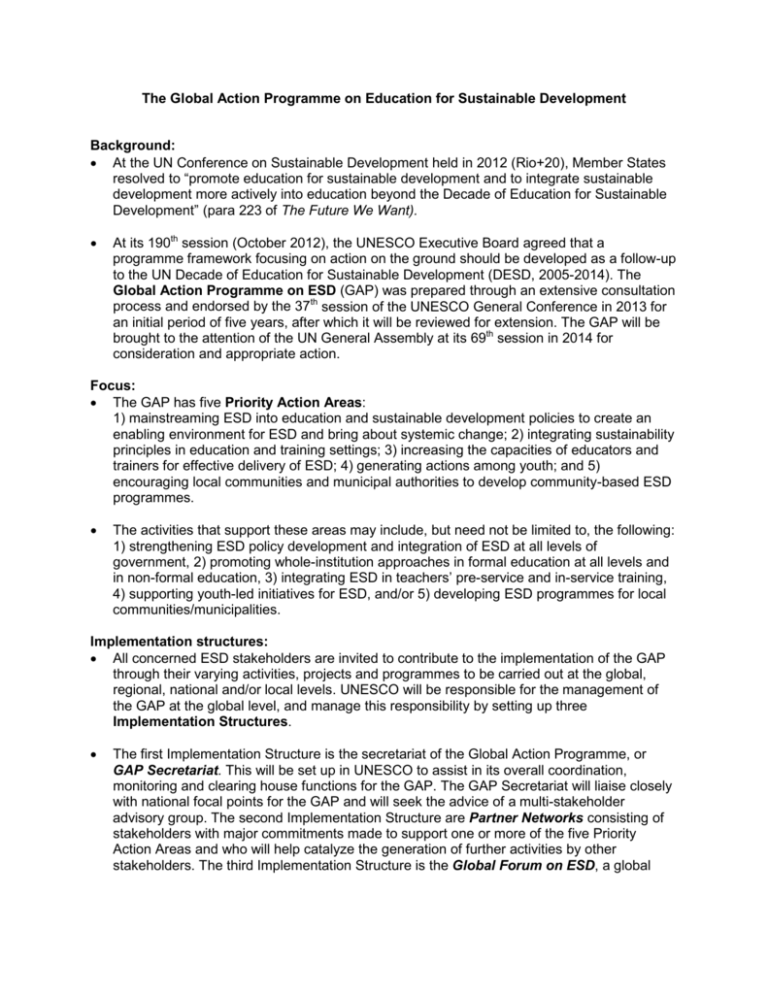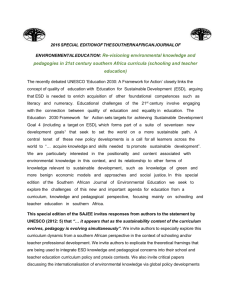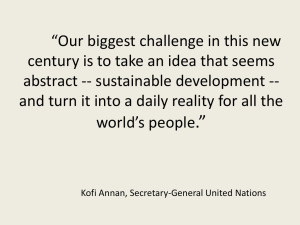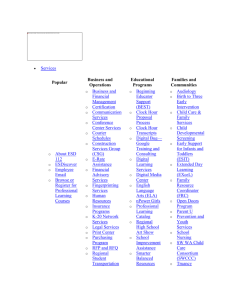The Global Action Programme on Education for - RCE
advertisement

The Global Action Programme on Education for Sustainable Development Background: • At the UN Conference on Sustainable Development held in 2012 (Rio+20), Member States resolved to “promote education for sustainable development and to integrate sustainable development more actively into education beyond the Decade of Education for Sustainable Development” (para 223 of The Future We Want). • At its 190th session (October 2012), the UNESCO Executive Board agreed that a programme framework focusing on action on the ground should be developed as a follow-up to the UN Decade of Education for Sustainable Development (DESD, 2005-2014). The Global Action Programme on ESD (GAP) was prepared through an extensive consultation process and endorsed by the 37th session of the UNESCO General Conference in 2013 for an initial period of five years, after which it will be reviewed for extension. The GAP will be brought to the attention of the UN General Assembly at its 69th session in 2014 for consideration and appropriate action. Focus: • The GAP has five Priority Action Areas: 1) mainstreaming ESD into education and sustainable development policies to create an enabling environment for ESD and bring about systemic change; 2) integrating sustainability principles in education and training settings; 3) increasing the capacities of educators and trainers for effective delivery of ESD; 4) generating actions among youth; and 5) encouraging local communities and municipal authorities to develop community-based ESD programmes. • The activities that support these areas may include, but need not be limited to, the following: 1) strengthening ESD policy development and integration of ESD at all levels of government, 2) promoting whole-institution approaches in formal education at all levels and in non-formal education, 3) integrating ESD in teachers’ pre-service and in-service training, 4) supporting youth-led initiatives for ESD, and/or 5) developing ESD programmes for local communities/municipalities. Implementation structures: • All concerned ESD stakeholders are invited to contribute to the implementation of the GAP through their varying activities, projects and programmes to be carried out at the global, regional, national and/or local levels. UNESCO will be responsible for the management of the GAP at the global level, and manage this responsibility by setting up three Implementation Structures. • The first Implementation Structure is the secretariat of the Global Action Programme, or GAP Secretariat. This will be set up in UNESCO to assist in its overall coordination, monitoring and clearing house functions for the GAP. The GAP Secretariat will liaise closely with national focal points for the GAP and will seek the advice of a multi-stakeholder advisory group. The second Implementation Structure are Partner Networks consisting of stakeholders with major commitments made to support one or more of the five Priority Action Areas and who will help catalyze the generation of further activities by other stakeholders. The third Implementation Structure is the Global Forum on ESD, a global platform for ESD stakeholders that will be convened periodically to facilitate, among others, exchanges of information and experiences and the global monitoring of progress. Launching: • Details of the GAP will be provided in a publication, provisionally titled: Roadmap for the Global Action Programme on ESD, which will be launched at the UNESCO World Conference on ESD, taking place 10-12 November 2014, in Aichi-Nagoya, Japan. In order to successfully launch the GAP, UNESCO calls for GAP Launch Commitments, inviting ESD stakeholders around the world to make their specific commitments to support the implementation of the GAP. Launch Commitments will be announced on the UNESCO website. Examples of major Commitments will also be announced at the UNESCO World Conference on ESD. • GAP Launch Commitments are plans for concrete activities that support one or more of the five Priority Action Areas. They can be project/programme activities targeting specific beneficiaries and/or ESD stakeholders, including advocacy and/or fund-raising efforts. Stakeholders making GAP Launch Commitments can be organizations/institutions from any sector of a country or of regional or global communities, including public and private, formal and non-formal, and education and non-education sectors. Stakeholders with large-scale activities that go beyond the national level are particularly encouraged to inscribe their GAP Launch Commitment. • While the GAP Launch Commitments will help ensure the successful launch of the GAP with concrete activities planned by stakeholders, they will also provide the particular ESD stakeholders with an opportunity to announce their ESD plans globally and thereby increase the visibility of their activities. For UNESCO, GAP Launch Commitments will help identify partners with whom it will form Partner Networks. GAP Launch Commitments will also provide an important basis for the periodic reporting on GAP implementation planned by UNESCO. • Interested stakeholders are invited to fill in the GAP Launch Commitment Registration Form available on UNESCO’s website (http://www.unesco.org/new/en/unesco-world-conferenceon-esd-2014/) and submit it to esd@unesco.org (indicating ‘GAP Commitment’ in the email subject line) by 15 August 2014. A sample of the Form is attached as Annex 2.






